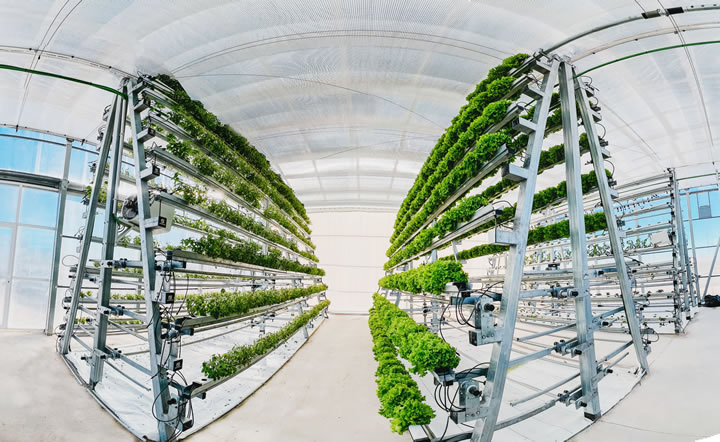New R&D project for vertical food production without artificial lighting.

The project supported and financed by the CDTI (Center for the Development of Industrial Technology) and the Ministry of Science and Innovation, began its design in 2020.
The study and development of this new architectural model called Vertical Sunning, with a passive solar design that uses intelligent light and water strategies to maximize the efficiency of the system, has been carried out for two years.
‘We have used innovative Ray Tracing technologies to design the structure, optimize PAR radiation, and homogenize the distribution of light to the crops that will be located inside.’ Says Juan Pardo, project manager and head of Innovation at Novagric.
A more efficient alternative to vertical farming systems
More than 70% of the world's population will live in megacities in the coming years, and according to demographic and nutritional trends, the demand for healthy and local food will be increasing.
The Vertical Sunning project was conceived as a vertical and urban farming solution to produce sustainable food in cities in a more efficient way.
Indoor farming has been evolving, but the investment remains high. Numerous research studies highlight the urge for vertical farms to decrease operation expenses to become more profitable. Vertical Sunning aims to solve this critical point: the high energy cost.
‘Our goal was to develop a new model of vertical food production without artificial lighting, prioritizing the access and distribution of solar radiation, with low-energy systems and using water and sunlight for reducing the carbon footprint’ explains Juan Pardo.
Vertical Sunning structure design
A prototype of the Vertical Sunning structure has been built at Novagric's technological facilities in Spain and is now in full production.

Interior structure of Vertical Sunning prototiphe installed
The construction model uses modular and lightweight materials such as mobile racking systems to take advantage of the space, varying the arrangement of the crops according to the path of sunlight.
To minimize energy consumption, water is used to absorb infrared radiation and allow PAR access, while reducing the heating and distributing heat to the interior.
The irrigation system is hydroponic, reducing water consumption by up to 50% compared to other substrate crops.
A technical-agronomic study is currently underway to validate the design in a real growing environment. Thanks to the large volume available, besides leafy, and aromatic species, more complex and unusual varieties have also been introduced in vertical farming to solve the challenge of productivity.
This would fulfill Novagric's three goals for the development of competitive technologies and crop production strategies: Use of the sun as an energy source, reduction of energy consumption and the introduction of new crop species to expand the range of vegetables available in this environment, concludes Pardo.
Watch Video Report with English Subtitles: https://youtu.be/AYrCtPNLR14
Comments (0)
This post does not have any comments. Be the first to leave a comment below.
Featured Product

